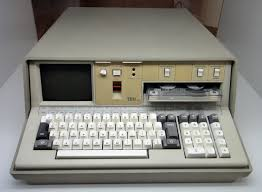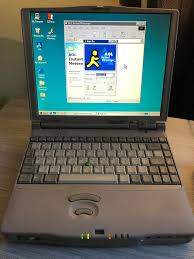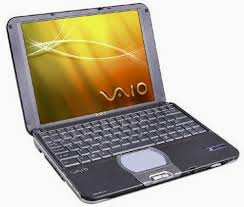“The Evolution of the Laptop: From Osborne 1 to Modern Ultrabooks – Who Invented It and How It Changed the World”
- SK
- Aug 17
- 3 min read
Introduction

When we think about laptops today, we imagine sleek, ultra-light, powerful devices that can fit into a backpack and still perform tasks once reserved for large desktops. But laptops were not born overnight. They are the result of decades of innovation, trial and error, and contributions from multiple inventors and companies across the world.
The story of the laptop is as much about human curiosity and technological ambition as it is about shrinking machines to make them portable. Let’s dive deep into how the laptop was invented, who played the key roles, and how it became one of the most important inventions of the digital age.
Early Concepts of Portable Computers

1940s–1950s: The first computers were massive room-sized machines (like ENIAC), so portability wasn’t even a consideration.
1968: The concept of a “personal portable computer” appeared in popular culture. Alan Kay, a computer scientist, later envisioned the “Dynabook”—a tablet-like device for children to learn from. Though it was just an idea, it laid the foundation for portable computing.
The First True Portable Computers

IBM 5100 (1975)
Known as one of the earliest “portable computers.”
It weighed 55 pounds (25 kg), so portability was more symbolic than practical.
Still, it could be carried (with difficulty), and it brought computing out of labs and into small offices.
Osborne 1 (1981)
Invented by Adam Osborne, a British-American entrepreneur.
Widely regarded as the world’s first commercial laptop.
Features:

24.5 pounds (11 kg)
Built-in 5-inch screen
Two floppy disk drives
Came preloaded with software
Though heavy by today’s standards, it was revolutionary—businessmen could take computing on the road.
The 1980s: Birth of the Modern Laptop

Compaq Portable (1983): IBM-compatible machine, popular with professionals.
GRiD Compass (1982): Designed by Bill Moggridge, often considered the first true clamshell laptop design (flat screen folding onto a keyboard). NASA used it in the space shuttle program.
Toshiba T1100 (1985): Often called the first mass-market laptop. It was lighter (around 4.1 kg), ran MS-DOS, and resembled laptops we use today.
The 1990s: Laptops Become Mainstream

Apple PowerBook series (1991): Apple revolutionized design by placing the trackball (later trackpad) in the center, with palm rests. This ergonomic design became the standard.
IBM ThinkPad (1992): Famous for its red “TrackPoint” button. Widely adopted by businesses and even NASA.
Advancements:
Color displays replaced monochrome.
Batteries improved, allowing 2–4 hours of use.
CD-ROM drives integrated.
The 2000s: Slimmer, Faster, Smarter

Sony VAIO, Dell Inspiron, HP Pavilion — stylish laptops aimed at home users.
Apple MacBook (2006): Combined sleek aluminum design with powerful performance. Introduced concepts like the unibody chassis.
Netbooks (2007–2010): Small, cheap laptops (e.g., Asus Eee PC) designed for internet browsing. Popular for a few years until tablets and ultrabooks overtook them.
The 2010s: Ultrabooks and 2-in-1s

Intel Ultrabook Initiative (2011): Thin, lightweight laptops with fast SSD storage.
Microsoft Surface (2012): Popularized the 2-in-1 convertible laptop-tablet design.
Apple MacBook Air (2010s): Ultra-light laptops became fashionable, influencing design across the industry.
The 2020s: Laptops in the Age of AI & Cloud

Apple Silicon (M1, M2, M3 chips): MacBooks became more power-efficient with long battery lives.
Chromebooks: Affordable, cloud-powered laptops, popular in schools.
AI-powered laptops (2023–2025): Built-in AI chips for faster tasks, voice recognition, and productivity tools.
Gaming Laptops: High-end laptops rival desktops, powered by NVIDIA RTX graphics and liquid-cooling systems.
Who Deserves Credit for the Invention?
The invention of the laptop cannot be credited to a single person. Instead, it evolved through contributions from multiple innovators:
Alan Kay (1968): Vision of portable “Dynabook.”
Adam Osborne (1981): Osborne 1, first commercial laptop.
Bill Moggridge (1982): GRiD Compass, first clamshell design.
Toshiba Engineers (1985): T1100, first mass-market laptop.
Apple & IBM (1990s): Popularized modern design and usability.
Together, they transformed laptops from heavy, niche machines into everyday devices that power our personal and professional lives.
Impact of Laptops on Society
Mobility: Work and study no longer tied to an office desk.
Education: Students carry lightweight laptops instead of heavy desktops.
Business: Enabled globalization, remote work, and online collaboration.
Technology Integration: Cameras, Wi-Fi, Bluetooth, and now AI chips—all made laptops central to daily life.
Cultural Symbol: A laptop today is more than a tool—it represents freedom, modernity, and connectivity.
Conclusion
The laptop’s journey is a fascinating story of innovation, perseverance, and vision. From Alan Kay’s conceptual Dynabook to Adam Osborne’s bulky Osborne 1, from IBM ThinkPads to Apple’s MacBooks, and now AI-powered ultrabooks—the evolution reflects humanity’s constant push to make technology smaller, smarter, and closer to us.
As we move into the AI era, laptops will continue to evolve—becoming smarter companions that integrate seamlessly into our work, creativity, and everyday lives.
📜 Copyright Disclaimer
© 2025 FBP - Fantaasco BlogPost. All rights reserved. Powered by: The F Group
Sponsored by: Fanbuluxe (fanbuluxe.in)
















Comments